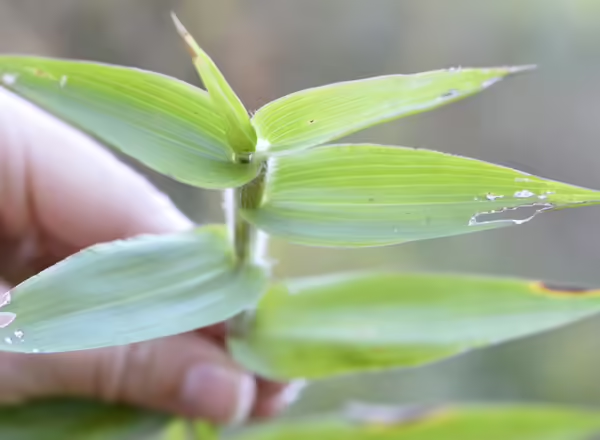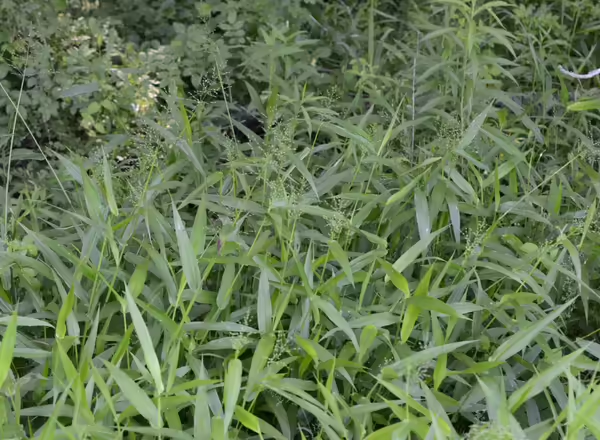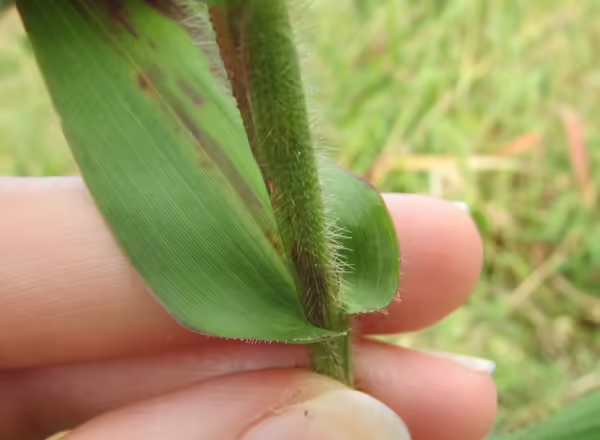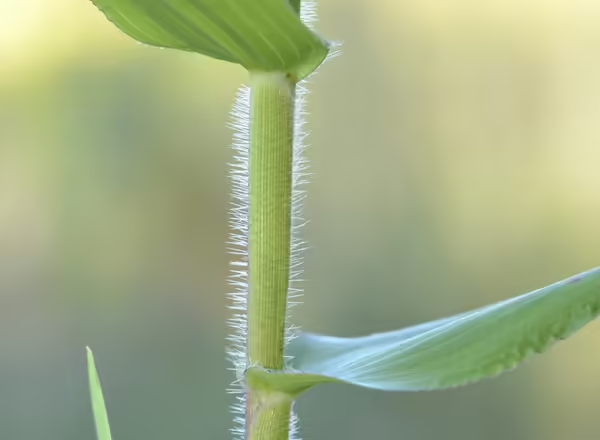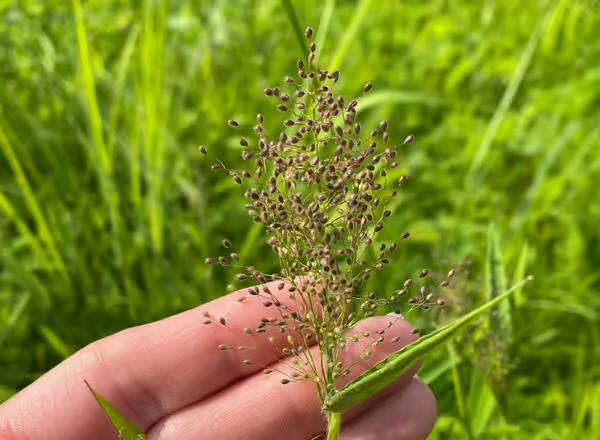A broad-leaved cool-season grass
There are over 30 species of Panic grasses in Illinois, including Dichanthelium clandestinum, also known as Deer Tongue Grass. This grass is unique because of its broad leaf shape and coat of hairs.
Where and how it grows
Deer Tongue Grass is a native species found across Illinois, especially in the southern half of the state. It prefers moist edge habitats, like the edge of a wooded area, but can also be found in full sun. It usually grows in dense clumps, and ranges in size from 2-4 feet tall.
Looking at the leaves
This grass has broad leaves that encircle, or clasp, the stem, and taper to a point. This shape makes them stand out from many other grasses that have linear leaves. The leaves can be hairy or smooth, but the leaf sheaths are typically covered in dense, stiff hairs.
Flowering not once, but twice
Deer Tongue Grass and the other grasses in its genus exhibit a different flowering pattern. In late spring they produce a terminal panicle of spikelets. These flowers are outcrossing. However, after producing these flowers, the grass continues to grow, and in the summer will produce smaller, additional panicles that emerge from side shoots along the stem. The flowers produced in these panicles are self-crossing flowers produced as a backup plan for this grass to ensure seed production.
The spikelets of this grass are very round and arranged densely in a branched panicle. The spikelets and branches are often covered in hairs.
Need a refresher on grass identification terms, like ligule and spikelet? Check out this blog post!
